Goal Estimation of Mandatory Lane Changes Based on Interaction between Drivers
Abstract
:1. Introduction
- This paper proposes a novel approach to estimate the goal of lane-changing. To the best of our knowledge, there is no paper to handle the goal estimation since most previous studies have discussed only the possibility of lane-changing.
- For considering the interaction between drivers, the dynamic potential field method is applied. The advantage of using the method is a description ability about discontinuous conditions. Since the potential field is continuously distributed on the lanes, it can prevent the unstable estimation, caused by using the relative distance or speed, even the corresponding vehicle changes a lane or overtakes other vehicles.
- The proposed method guarantees the best performance even the previous method is applied to the goal estimation. By extracting the novel features and checking the collision risk based on the trajectory prediction, the great accuracy of goal estimation can be ensured.
2. Problem Definition
3. Proposed Method
3.1. Feature Extraction for the Interaction
3.2. SVM-Based Goal Estimation
3.3. Collision Check Based on Trajectory Prediction
4. Experiments
4.1. Dataset
4.2. Results
5. Conclusions
Author Contributions
Funding
Conflicts of Interest
References
- U. S. Department of Transportation. Critical Reasons for Crashes Investigated in the National Motor Vehicle Crash Causation Survey; Report No. DOT HS 812 115; USDOT: Washington, DC, USA, 2015.
- Björklund, G.M.; Åberg, L. Driver behavior in interaction: Formal and informal traffic rules. Transp. Res. Part F Traffic Psychol. Behav. 2005, 8, 239–253. [Google Scholar] [CrossRef]
- Zaidel, D.M. A modeling perspective on the culture of driving. Accid. Anal. Prev. 1992, 24, 585–597. [Google Scholar] [CrossRef]
- Toledo, T.; Koutsopoulos, H.; Ben-Akiva, M. Modeling integrated lane-changing behavior. Transp. Res. Rec. J. Transp. Res. Board 2003, 1857, 30–38. [Google Scholar] [CrossRef] [Green Version]
- Nobukawa, K.; Bao, S.; LeBlanc, D.J.; Zhao, D.; Peng, H.; Pan, C.S. Gap acceptance during lane changes by large-truck drivers: An image-based analysis. IEEE Trans. Intell. Transp. Syst. 2016, 17, 772–781. [Google Scholar] [CrossRef] [PubMed]
- Wei, H.; Lee, J.; Li, Q.; Li, C.J. Observation-based lane-vehicle assignment hierarchy: Microscopic simulation on urban street network. Transp. Res. Rec. J. Transp. Res. Board 2000, 1710, 96–103. [Google Scholar] [CrossRef] [Green Version]
- Kita, H. A merging-giveway interaction model of cars in a merging section: A game theoretic analysis. Transp. Res. Part A Policy Pract. 1999, 33, 305–312. [Google Scholar] [CrossRef]
- Minderhoud, M.M.; Bovy, P.H.L. Extended time-to-collision measures for road traffic safety assessment. Accid. Anal. Prev. 2001, 33, 89–97. [Google Scholar] [CrossRef]
- Tresilian, J.R. Visually timed action: Time-out for ‘tau’? Trends Cogn. Sci. 1999, 3, 301–310. [Google Scholar] [CrossRef]
- Woo, H.; Ji, Y.; Kono, H.; Tamura, Y.; Kuroda, Y.; Sugano, T.; Yamamoto, Y.; Yamashita, A.; Asama, H. Dynamic potential-model-based feature for lane change prediction. In Proceedings of the 2016 IEEE International Conference on Systems, Man, and Cybernetics, Budapest, Hungary, 9–12 October 2016; pp. 838–843. [Google Scholar]
- Crammer, K.; Singer, Y. On the algorithmic implementation of multi-class kernel-based vector machines. Mach. Learn. Res. 2001, 2, 265–292. [Google Scholar]
- Jorge, V.A.M.; Maffei, R.; Franco, G.S.; Daltrozo, J.; Giambastiani, M.; Kolberg, M.; Prestes, E. Ouroboros: Using potential field in unexplored regions to close loops. In Proceedings of the 2015 IEEE International Conference on Robotics and Automation, Seattle, WA, USA, 26–30 May 2015; pp. 2125–2131. [Google Scholar]
- Ma, Y.; Zheng, G.; Perruquetti, W.; Qiu, Z. Motion planning for non-holonomic mobile robots using the i-pid controller and potential field. In Proceedings of the 2014 IEEE/RSJ International Conference on Intelligent Robots and Systems, Chicago, IL, USA, 14–18 September 2014; pp. 3618–3623. [Google Scholar]
- Chiang, H.T.; Malone, N.; Lesser, K.; Oishi, M.; Tapia, L. Path-guided artificial potential fields with stochastic reachable sets for motion planning in highly dynamic environments. In Proceedings of the 2015 IEEE International Conference on Robotics and Automation, Seattle, WA, USA, 26–30 May 2015; pp. 2347–2354. [Google Scholar]
- Hoshino, S.; Maki, K. Safe and efficient motion planning of multiple mobile robots based on artificial potential for human behavior and robot congestion. Adv. Robot. 2014, 29, 1095–1109. [Google Scholar] [CrossRef]
- Chang, C.; Lin, C. LIBSVM: A library for support vector machines. ACM Trans. Intell. Syst. Technol. 2011, 2, 27:1–27:27. Available online: http://www.csie.ntu.edu.tw/~cjlin/libsvm (accessed on 19 April 2020). [CrossRef]
- Toledo, T.; Zohar, D. Modeling duration of lane changes. Transp. Res. Rec. J. Transp. Res. Board 2007, 1999, 71–78. [Google Scholar] [CrossRef]
- Butakov, V.A.; Ioannou, P. Personalized driver/vehicle lane change models for ADAS. IEEE Trans. Veh. Technol. 2014, 64, 4422–4431. [Google Scholar] [CrossRef]
- Woo, H.; Madokoro, H.; Sato, K.; Tamura, Y.; Yamashita, A.; Asama, H. Advanced adaptive cruise control based on operation characteristic estimation and trajectory prediction. Appl. Sci. 2019, 9, 4875. [Google Scholar] [CrossRef] [Green Version]
- Federal Highway Administration, Next Generation Simulation. Available online: https://ops.fhwa.dot.gov/trafficanalysistools/ngsim.html (accessed on 17 March 2020).
- Woo, H.; Ji, Y.; Tamura, Y.; Kuroda, Y.; Sugano, T.; Yamamoto, Y.; Yamashita, A.; Asama, H. Lane-change detection based on individual driving style. Adv. Robot. 2019, 33, 1087–1098. [Google Scholar] [CrossRef]
- Green, M. How long does it take to stop?: Methodological analysis of driver perception-brake times. Transp. Hum. Factors 2000, 2, 195–216. [Google Scholar] [CrossRef]
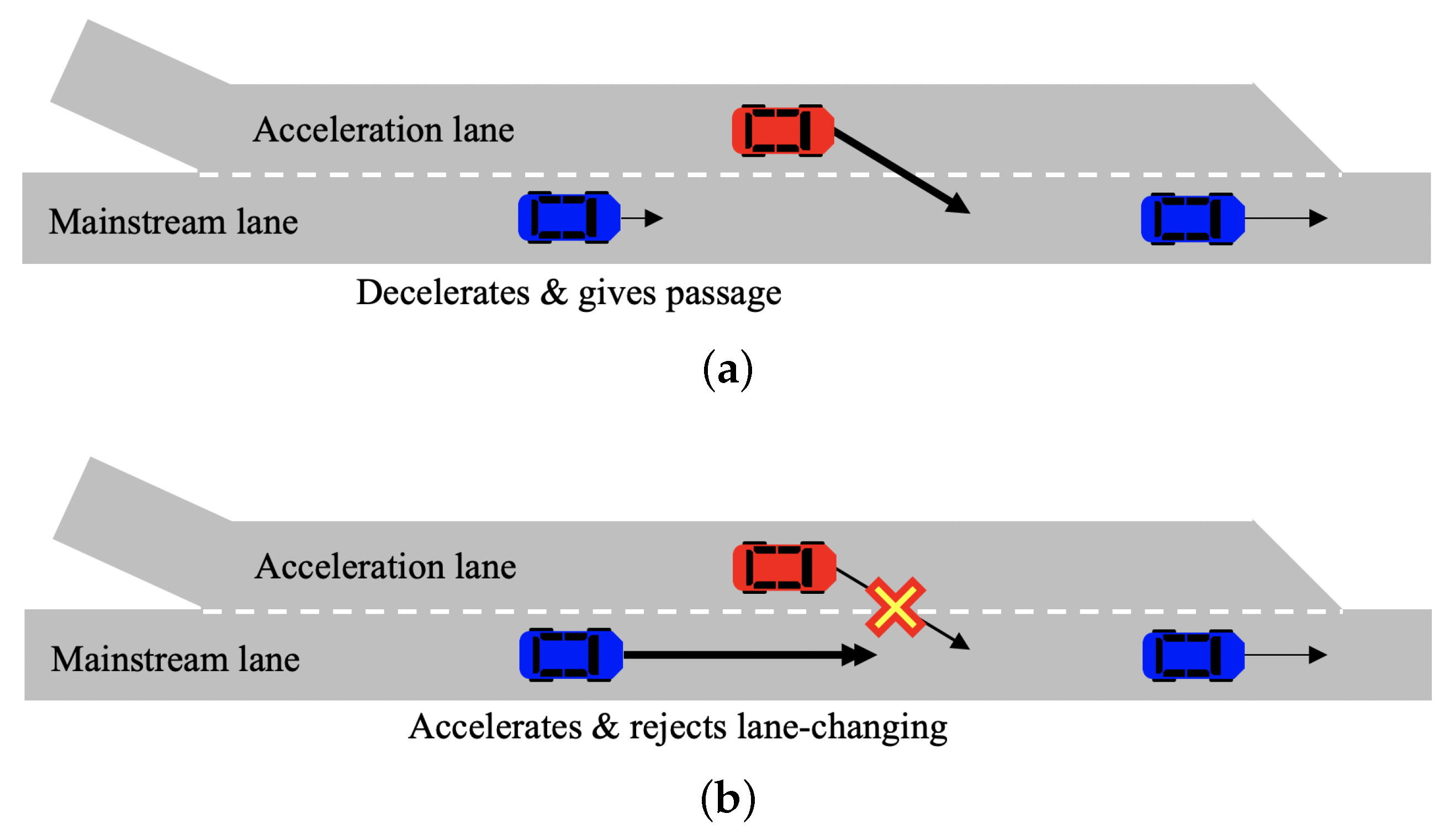

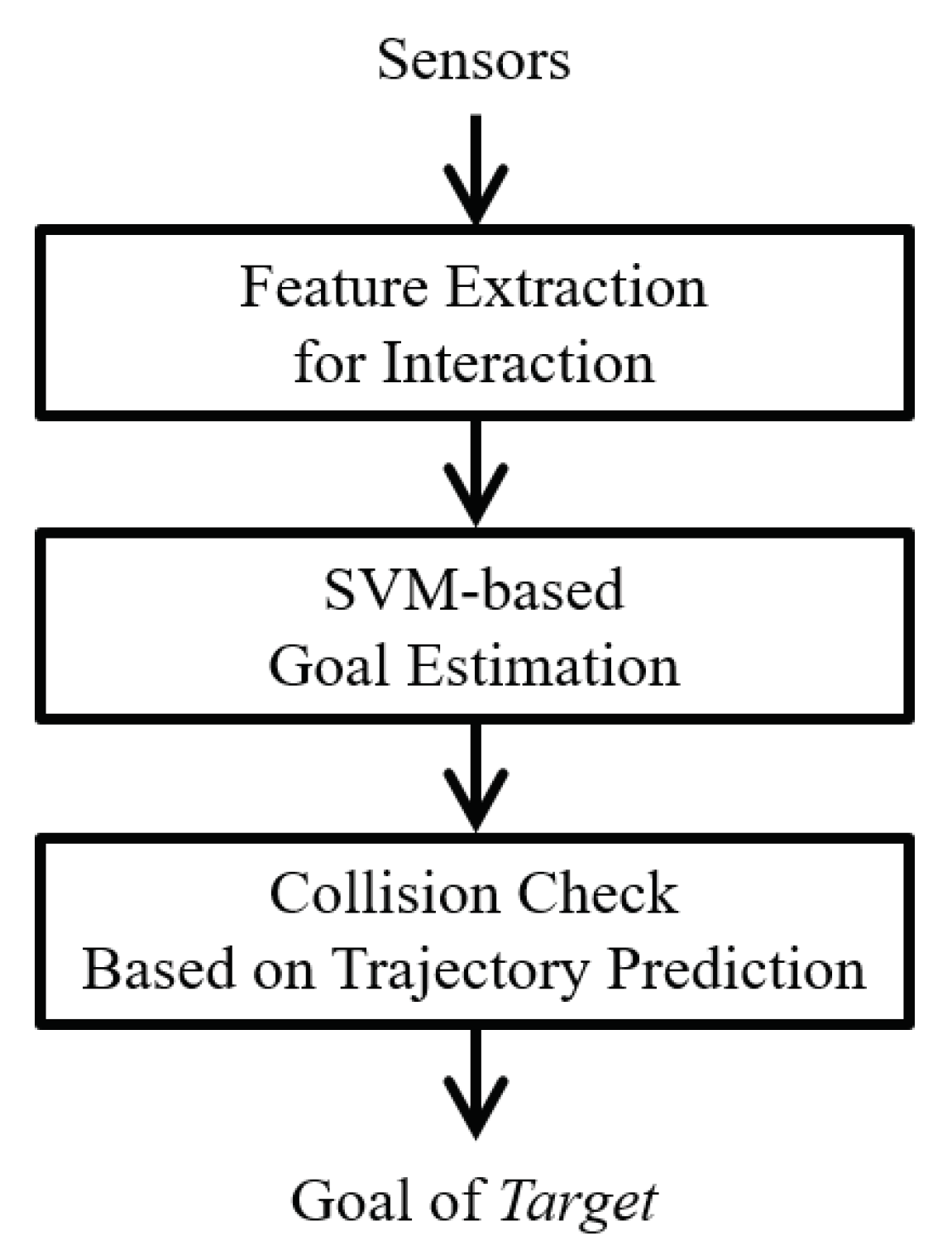
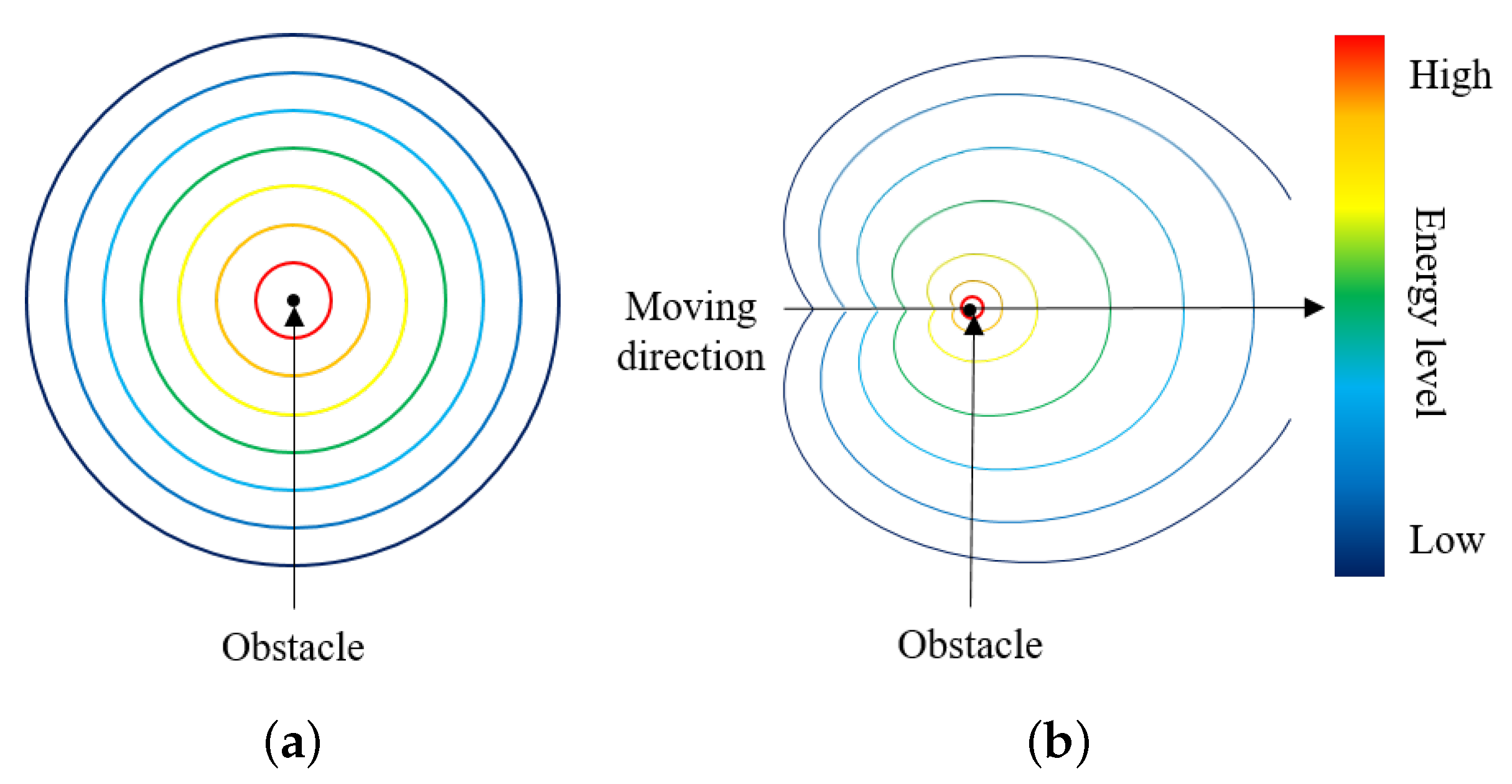
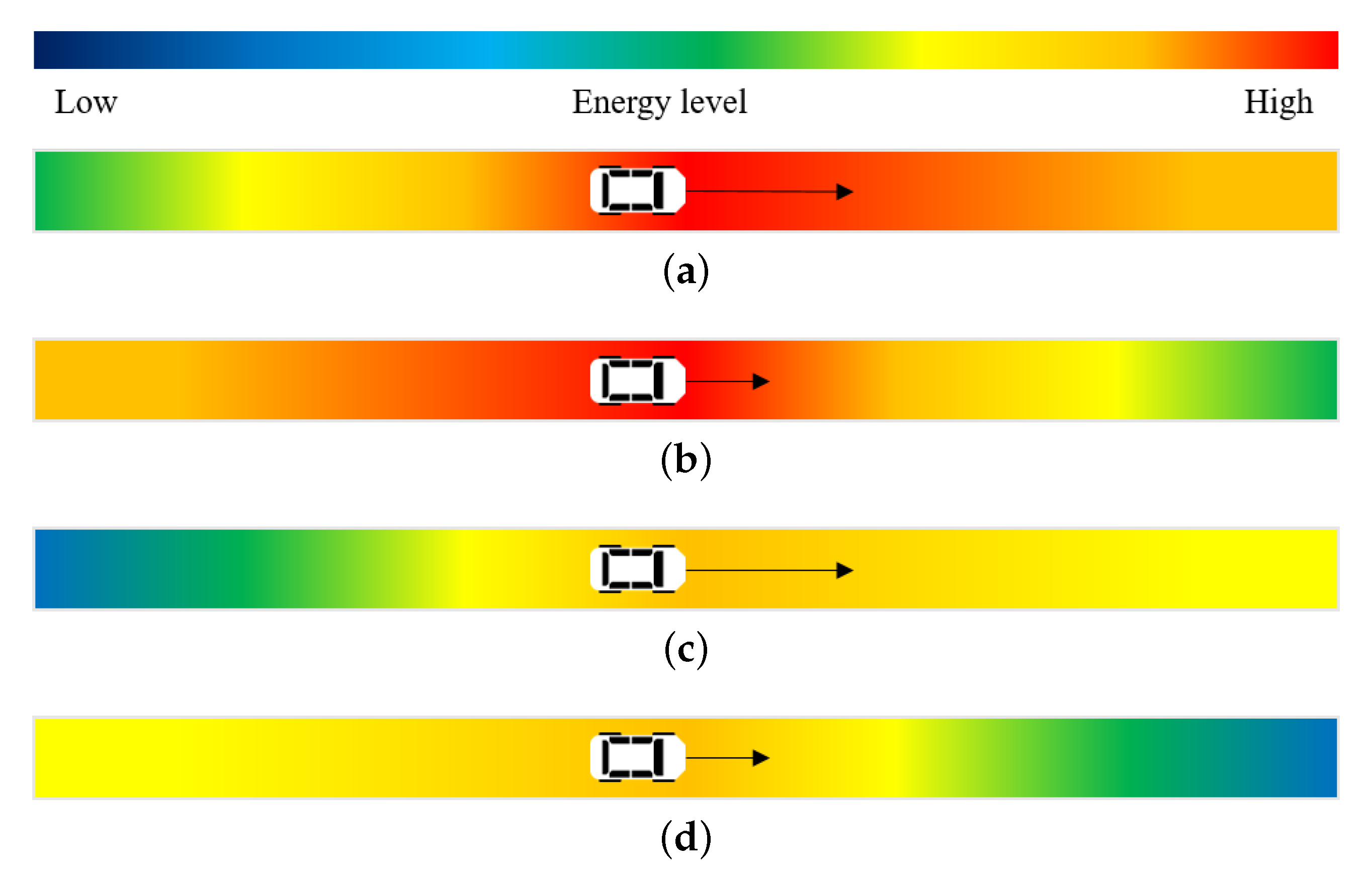
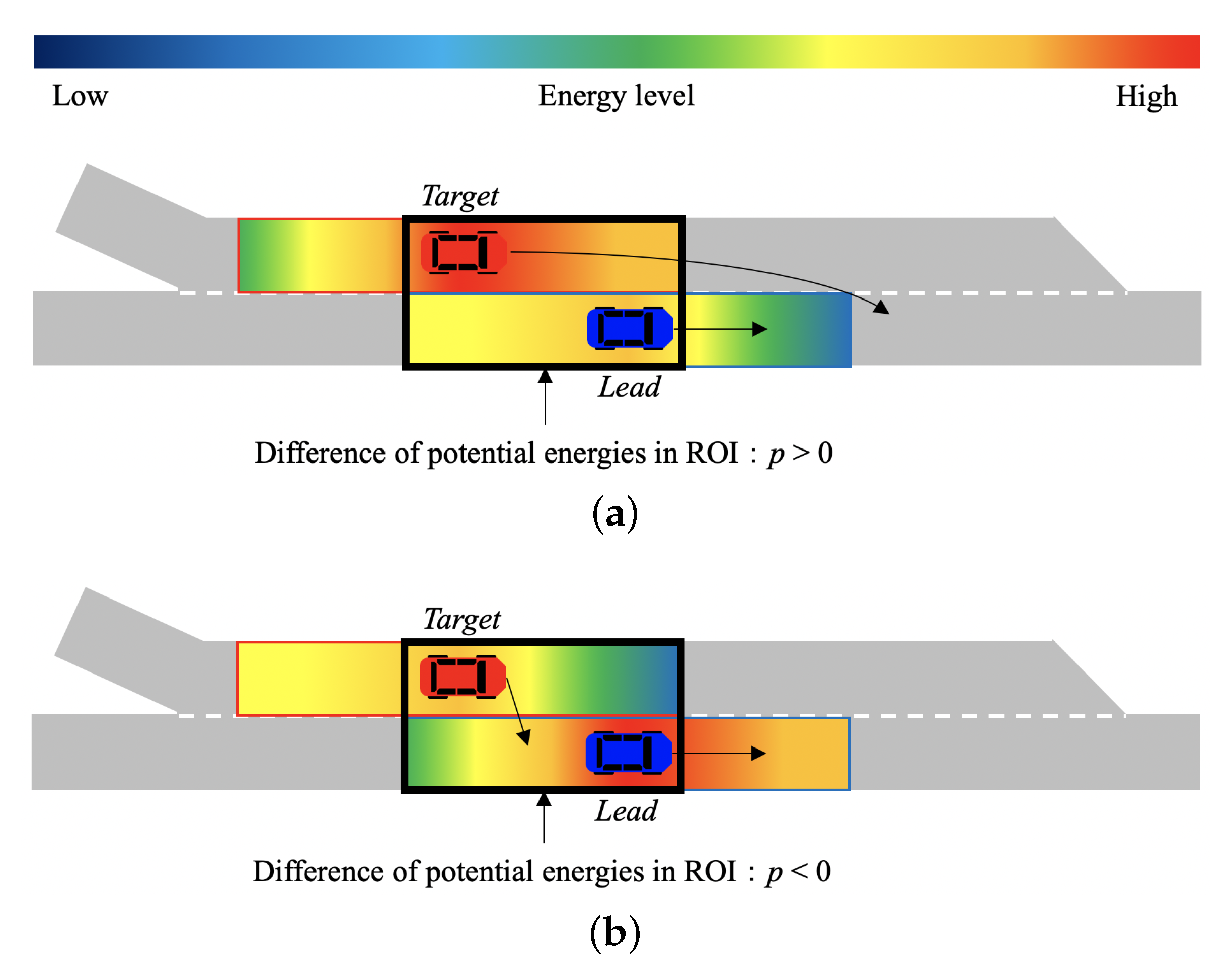
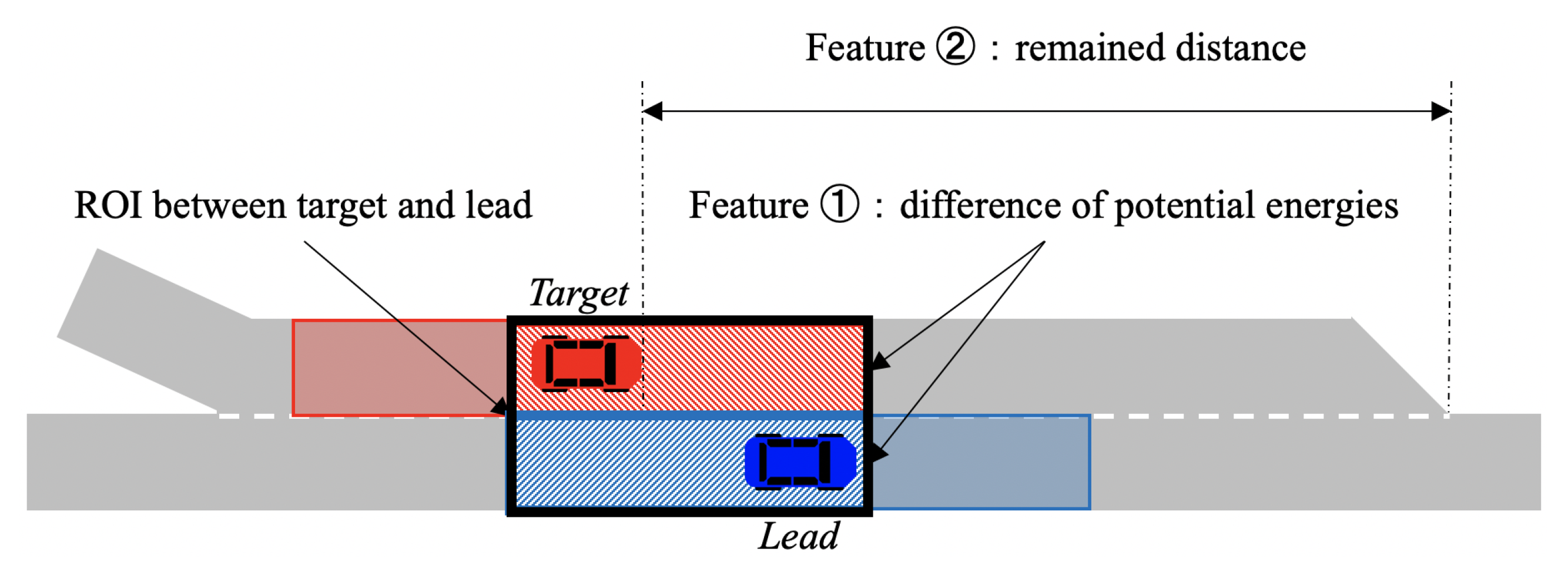

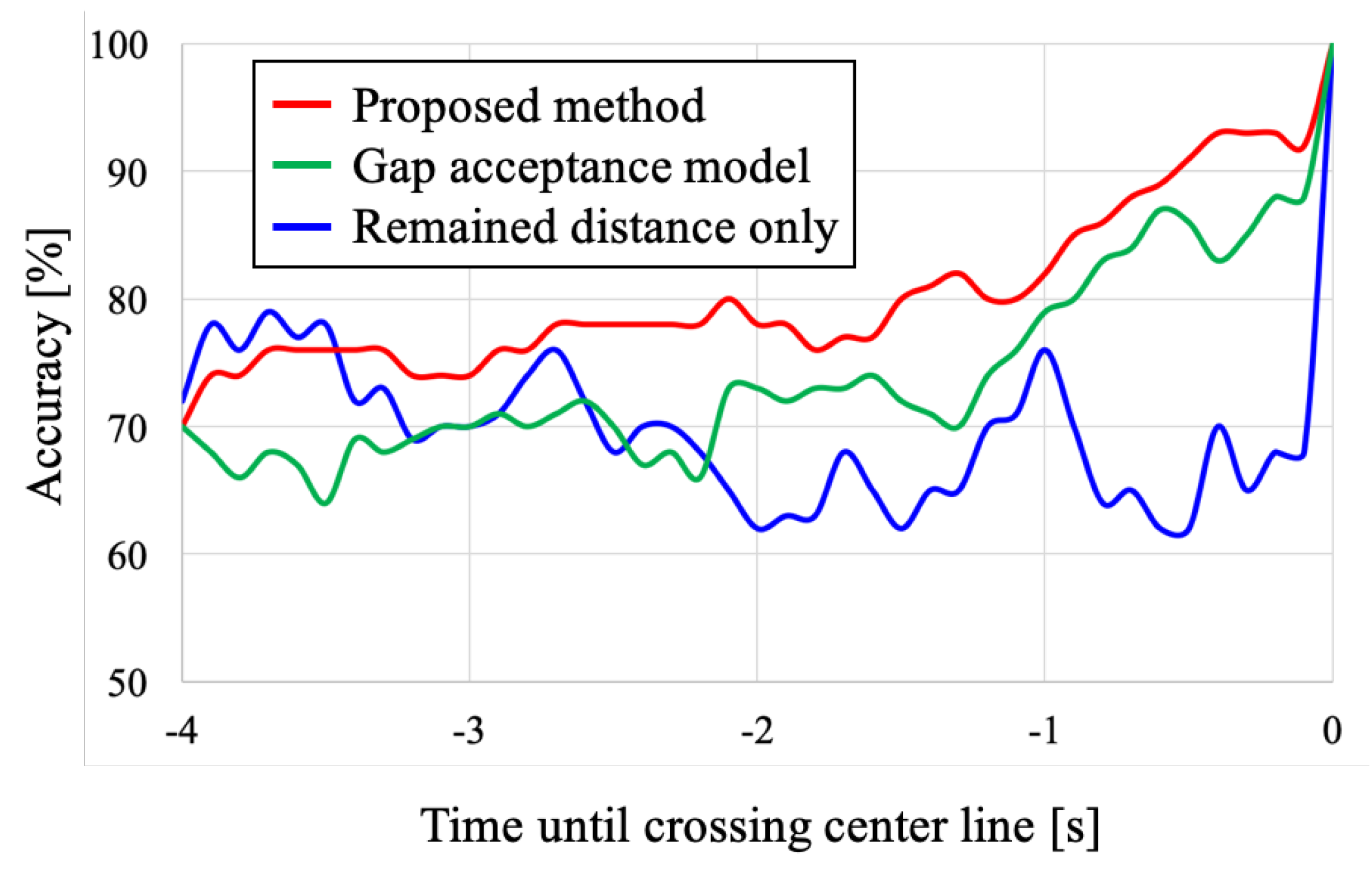
© 2020 by the authors. Licensee MDPI, Basel, Switzerland. This article is an open access article distributed under the terms and conditions of the Creative Commons Attribution (CC BY) license (http://creativecommons.org/licenses/by/4.0/).
Share and Cite
Woo, H.; Sugimoto, M.; Madokoro, H.; Sato, K.; Tamura, Y.; Yamashita, A.; Asama, H. Goal Estimation of Mandatory Lane Changes Based on Interaction between Drivers. Appl. Sci. 2020, 10, 3289. https://doi.org/10.3390/app10093289
Woo H, Sugimoto M, Madokoro H, Sato K, Tamura Y, Yamashita A, Asama H. Goal Estimation of Mandatory Lane Changes Based on Interaction between Drivers. Applied Sciences. 2020; 10(9):3289. https://doi.org/10.3390/app10093289
Chicago/Turabian StyleWoo, Hanwool, Mizuki Sugimoto, Hirokazu Madokoro, Kazuhito Sato, Yusuke Tamura, Atsushi Yamashita, and Hajime Asama. 2020. "Goal Estimation of Mandatory Lane Changes Based on Interaction between Drivers" Applied Sciences 10, no. 9: 3289. https://doi.org/10.3390/app10093289
APA StyleWoo, H., Sugimoto, M., Madokoro, H., Sato, K., Tamura, Y., Yamashita, A., & Asama, H. (2020). Goal Estimation of Mandatory Lane Changes Based on Interaction between Drivers. Applied Sciences, 10(9), 3289. https://doi.org/10.3390/app10093289





